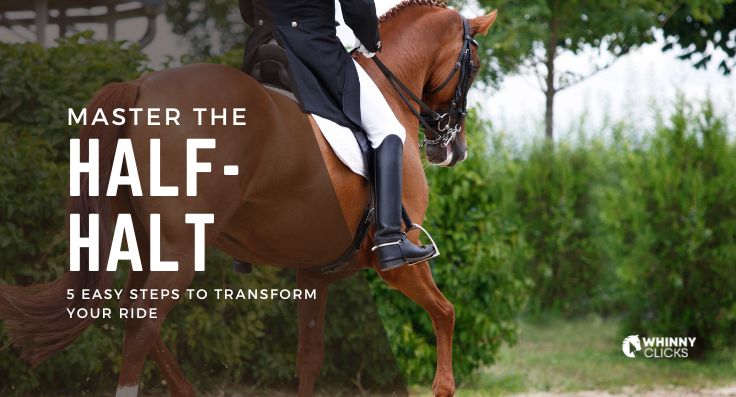5 Easy Steps to Master the Half-Halt and Transform Your Riding Skills
The half halt is an essential, yet often misunderstood, element of equestrian training. At its core, it’s a communication tool, a subtle cue that prepares the horse for what’s next, whether it’s a change in pace, direction, or balance. For riders striving to enhance their skills and develop a deeper riding connection with their horse, mastering the half halt is a critical step.
What is a Half Halt in Horse Riding?
A half halt is a temporary and slight holding of the reins, combined with leg pressure, used to balance and focus the horse. It’s not a mere slowing down but a preparatory signal that heightens the horse’s attentiveness and readiness. This technique is fundamental in both horse communication and control, acting as a bridge between rider intent and horse action.
How to Execute a Half Halt
To execute a half halt, begin by gently squeezing the reins while simultaneously applying pressure with your legs. The key is subtlety and synchronization. Avoid abrupt pulls or strong pressure, as the goal is to alert, not alarm, your horse. Common mistakes include over-reliance on hand movements or neglecting leg signals, leading to confusion and resistance from the horse.
Mastering the Timing and Feel of the Half Halt
Timing and feel are paramount in half halts. The cue should coincide with the horse’s natural rhythm, ideally during the suspension phase of the gait. Developing this timing requires practice and a keen sense of your horse’s movements. Regular exercises, such as transitions between gaits, can enhance your rider-horse connection, making your cues more intuitive and effective.
Applying the Half Halt Across Disciplines
While the basic concept of the half halt remains consistent, its application can vary across disciplines like dressage, show jumping, and eventing. In dressage, for instance, it’s used for refined movements and transitions, whereas in show jumping, it helps in adjusting stride before a jump. Understanding these nuances is crucial for adapting the technique to different situations.
Enhancing Your Half Halt Technique
Even experienced riders face challenges with the half halt. Common issues include timing mismatches and inconsistent responses from the horse. To overcome these, focus on consistent practice, mindful riding, and if possible, seek feedback from a seasoned instructor. Remember, the half halt is as much about the rider’s awareness as it is about the horse’s response.
Conclusion
Mastering the half halt is a journey, one that enhances not just your riding technique but also your bond with your horse. It requires patience, practice, and a deep understanding of equine behavior. As you continue to refine your skills, remember that the half halt is more than a command; it’s a conversation with your horse, guiding you toward balanced and harmonious riding.
Frequently Asked Questions
What is the main purpose of a half halt in horse riding?
The half halt serves to alert and balance the horse, preparing it for a change in movement or direction. It’s a critical tool for enhancing communication between rider and horse.
How often should I use the half halt while riding?
The frequency depends on the context. It should be used as needed to maintain rhythm, balance, and focus. It’s not about how often, but how effectively it’s used.
Can half halt be used in all riding disciplines?
Absolutely. While its application may vary, the half halt is a universal tool across all equestrian disciplines, from dressage to trail riding.
What are the signs that a half halt is effectively executed?
An effective half halt results in a more attentive, balanced horse, ready for the next command. The horse should not come to a complete stop but rather show a momentary shift in focus and balance.
How can I improve my half halt technique?
Practice is key. Pay attention to your horse’s response, refine your timing, and seek constructive feedback from instructors or experienced riders.


